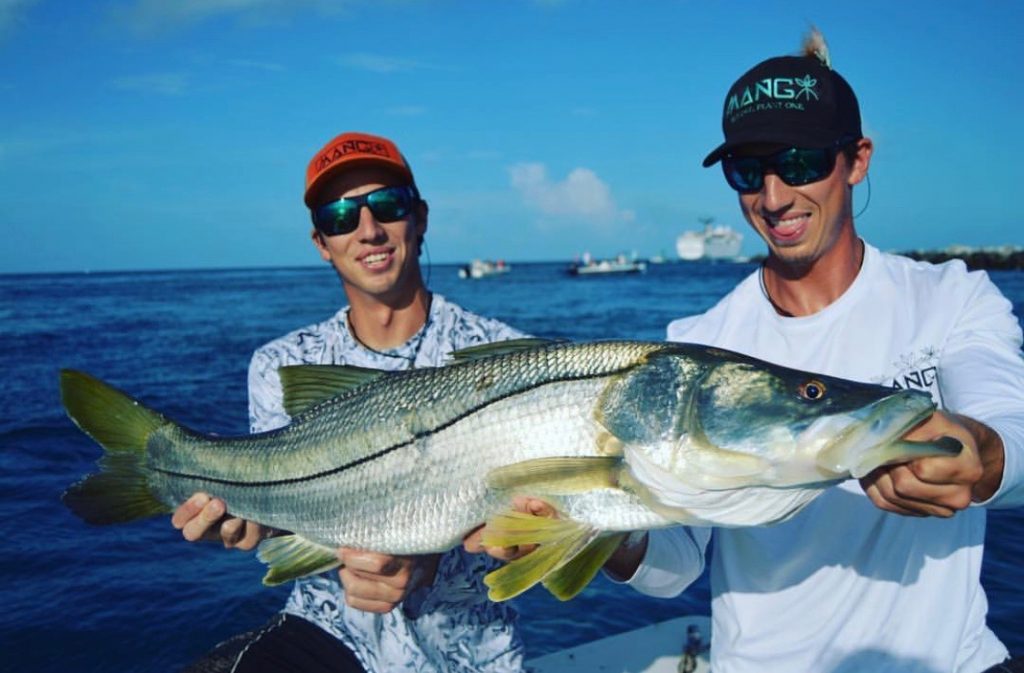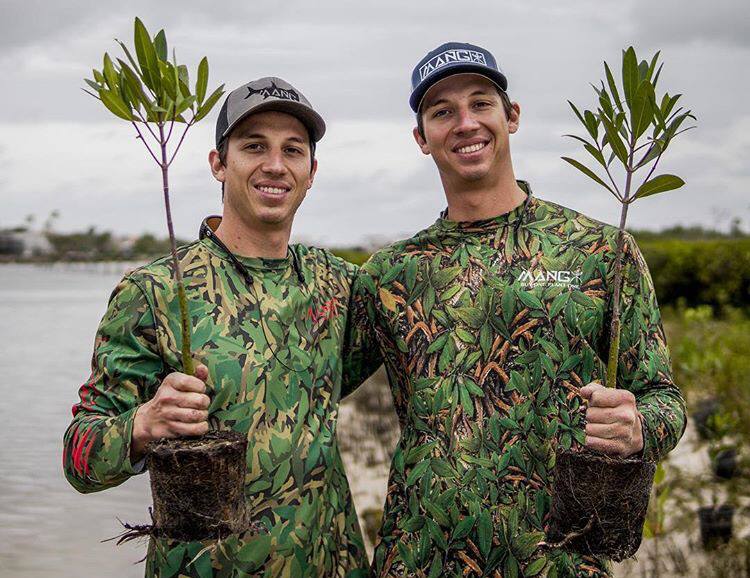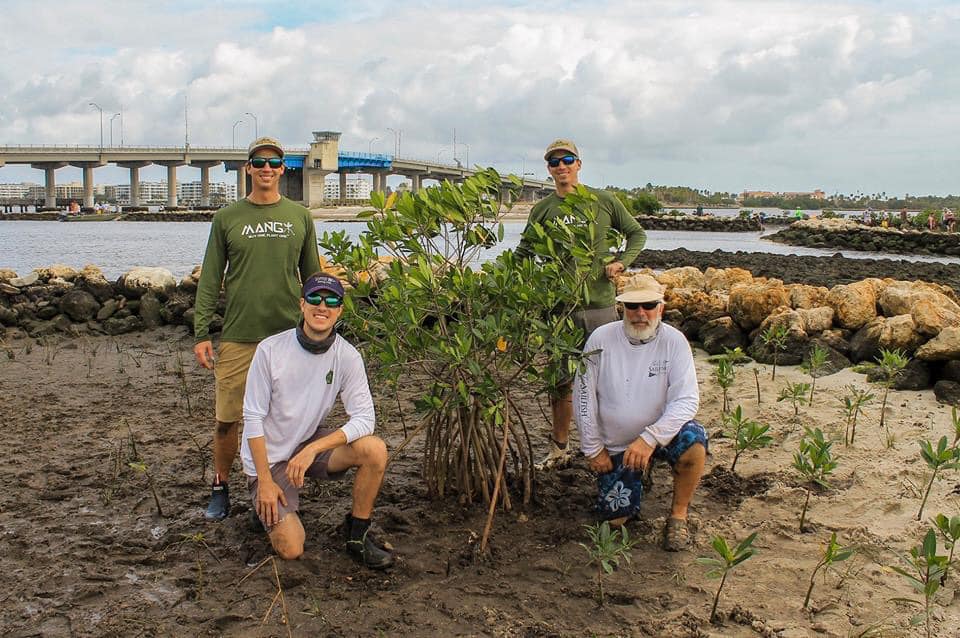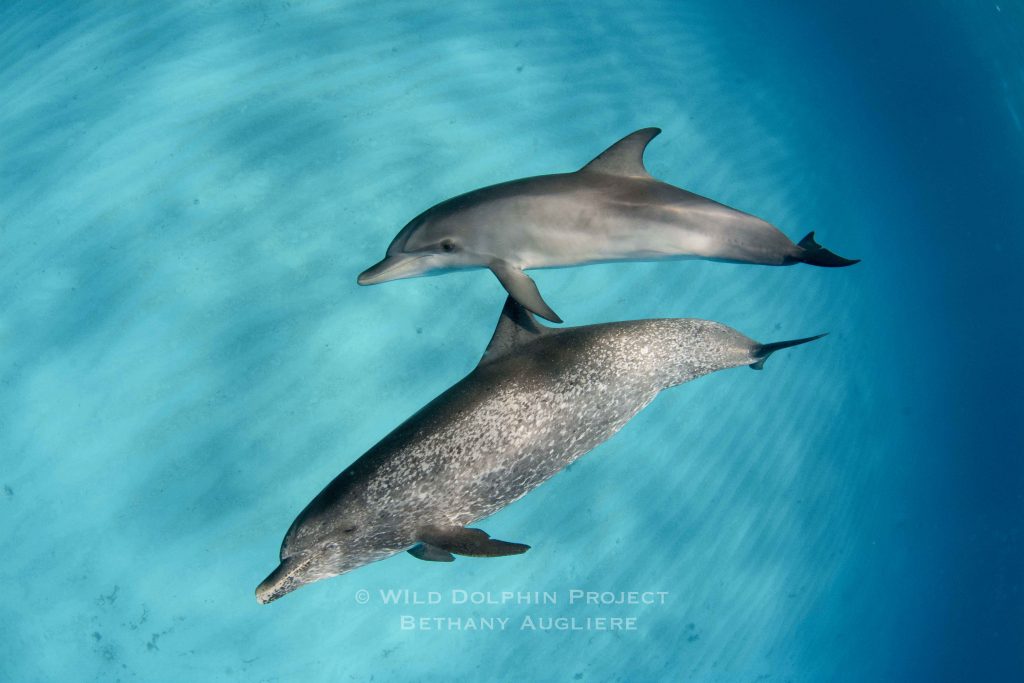For the month of May, MANG — a Florida based, outdoor clothing company — is collaborating with the Wild Dolphin Project. A portion of proceeds from the limited Wild Dolphin MANG collection will be donated to WDP.
Using eco-friendly and sustainable materials, MANG’s mission is to “change the world one mangrove at a time through education, coastal restoration and community stewardship,” says CEO Kyle Rossin. They make products such as hats, buffs, and performance UV 50 shirts and hoodies. For every product sold, a mangrove is planted (check out their mangrove map to see where and how many).
To date, MANG has planted more than 31,000 mangroves both locally and internationally, says Rossin, including more than 10,000 in the state of Florida, 14,800 in Madagascar, 5,000 in Mozambique and about 1,000 on the island of Guanaja, Honduras.
“It is always a joy to visit an original site and see our mangroves growing strong,” says Rossin. “In particular, we are proud of Big Bertha, a 7-year-old mangrove donated
to us by the West Palm Beach Fishing club. This tree has taken root and is taking to the sky.”
The Wild Dolphin Project recently interviewed Rossin, to discuss MANG, how it started, and why they’ve partnered up with non-profits like the Wild Dolphin Project.
WDP: Why and how were you inspired to start MANG?
KR: After high school, I ventured to the West Coast of Florida to study environmental studies at Florida Gulf Coast University in Fort Myers. Course after course drew me near my passion, which was to help save a world that seemed hopeless. At the time, I had no idea what I was going to do our any plans for the future. One idea changed everything.
My oceanography class and I took a field trip to FGCU’s Vestor marine lab located in Bonita Springs. This field station on Estero Bay was a Pandora’s box for researchers. After a day of research, a buddy of mine and I were staring at a stand of mangroves behind the lab. He said “you know what would be cool? Mangrove Camouflage!” I agreed and our 2-year journey of developing the company began, from product development (Mangroflage), to thousands of ideas for a brand name and to our goal to give back to the environment.
Creating gear that looked good and protected people from the elements was our goal. As fishermen, we are constantly are beaten up by the sun and the elements. Performance UV 50 shirts added extra sun block and much need breathability for hot summer days. “Buy One. Plant One” was the icing on the cake and gave us the much needed passion to pursue this endeavor in a heated market full of performance apparel.

MANG co-founders Keith and Kyle Rossin have always appreciated the outdoors and cared about sustainability and conservation. Photo courtesy of MANG.
WDP: Can you tell us a bit about process growing and planting mangroves? Where do you grow them, how do you pick locations?
KR: The process is simple but effective. We collect mangrove shoots floating in the wild and propagate them until they begin to root in water. Once they begin rooting, we transplant them into pots and into our troughs at our nursery for about two years before we find a place to plant them in wild. We found that our best chances of success were to grow mature trees that had a head start. Our first planting projects were facilitated by the local county (Palm Beach) and home-owners in need of shoreline restoration. The County in Palm Beach has been building shoreline restoration, island projects for the past 10 years. We began by knocking on the door and donating trees to their projects. After a year, we were able to adopt our very own island (south cove – in downtown West Palm Beach).
WDP: Why did you decide to partner with non-profits?
KR: We did our first partnership last summer with Captains for Clean water in our “Restore the Flow Campaign.” At the time, Florida’s economy — specifically the West Coast — was in a down turn. Red tide and blue-green algae threatened our coastal lifestyle. So, we jumped to collaborate with Captains and it was successful for two reasons: raising awareness and raising capital for the non profit. We enjoyed working on this project so much that we decided in 2019 we were going to launch our monthly campaign program.
WDP: Why are you excited to work with us, the WDP?
KR: What makes me most excited is to explain the interconnectivity that dolphins and mangroves have in the wild. Our focus is to educate and WDP gives us more arsenal to connect nature to our coastal ecosystems.



